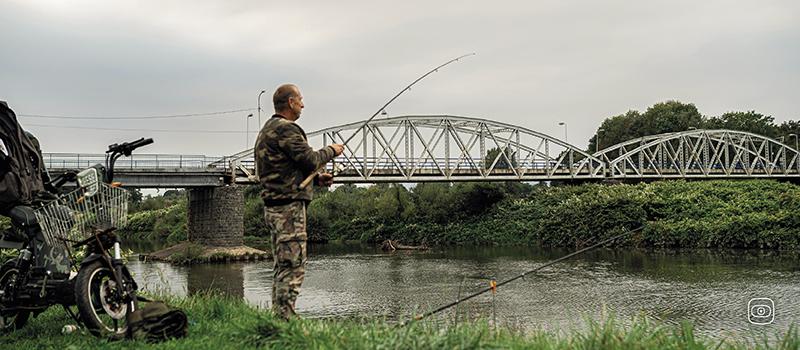The series of materials prepared by the Czech-Polish team details the crisis that the Oder river still faces after the mass fish die-off in 2022, which was the biggest ecological disaster in European Union history.
The group uses interviews with experts, open source research, requests for public information and field trips to find out if there have been any positive development in the environmental situation of the highly polluted and regulated stream for the last three years. The project includes experiences from a wide variety of sources, including officials from ministries and institutes responsible for the water management, scientists, environmental activists and local fishermen.
The materials also indicate a number of solutions that could potentially help the Oder river – from the dynamic system for water-legal permits, through rewilding investments, to recognising the river’s legal personhood.
Articles also detail the current issues with effectively helping the Oder river: dilution of responsibilities regarding river management, economic importance of the stream to the Upper Silesian industry, a long history of regulating the Oder river, and the lack of meaningful cooperation between and also within the three states.
Key findings
- Three years after the disaster, the main cause of the catastrophe – the saltwater discharge from the mines in the Upper Silesia region – is still not addressed by any systemic solution;
- There is a distinct lack of cooperation between governments of all three countries when it comes to the management of the Oder river;
- Competencies regarding the management on rivers are often diluted between different state institutions and ministries, thwarting effective environmental solution-building;
- On Poland’s side, which was mainly responsible for the 2022 disaster, the change in government resulted in some investments into desalination installations and rewilding efforts, however there are still no systemic solutions to limit the saltwater and pollution discharge into rivers;
- The key issue in solving the issue of Oder’s pollution is the conflict of its economic value to the mines in the Upper Silesia region (currently the river acts as a destination to discharge gigantic amounts of saltwater, which is the byproduct of mining operations), its value as a waterway to transfer goods to the ports of the Baltic sea, which resulted in the heavy regulation of the river, and the environmental needs of the highly polluted ecosystem.
- On the Czech side, there are no systematic measurements regarding the transfer of pollution from the Oder river into Poland. Although several studies and experts have confirmed that the industrial pollution is decades old and spreads further during major incidents linked to climate change, such as floods, there are no concrete steps or intentions to address this issue.
- Even though most of the heavy industries in Ostrava and Bohumín, once major contributors to the river’s pollution, have ceased operations, several plants remain that still pose a risk of contamination, particularly during human errors or floods. As the impacts of climate change intensify, the likelihood of such incidents increases, yet neither municipalities nor the state are implementing preventive measures recommended by environmental experts.
- River management still fails to apply the measures proposed by experts. The Oder remains heavily canalized instead of being restored to a more natural state, which affects the entire river system - what happens upstream directly impacts downstream areas. Due to this and the effects of climate change, the river’s ecological quality continues to decline, and the health risks for people living nearby are expected to worsen over time. Despite this, the problem is not being addressed comprehensively by municipalities or the state, leaving the initiative largely to academic and civil society actors.
Illustration by Kateřina Šimečková




